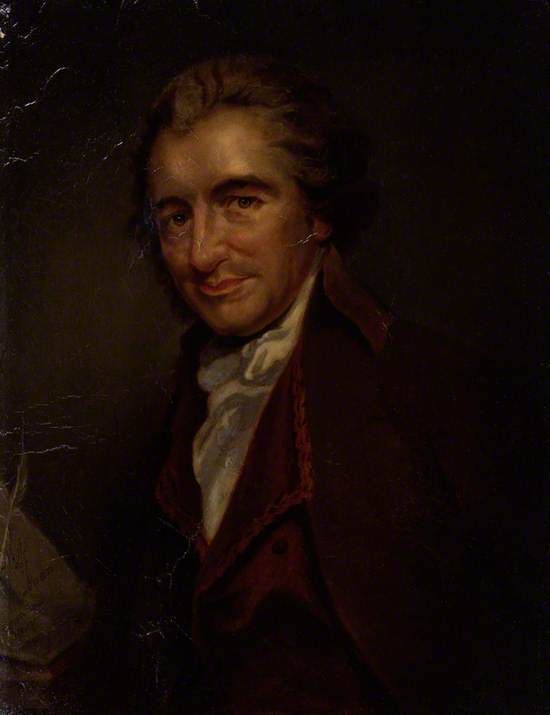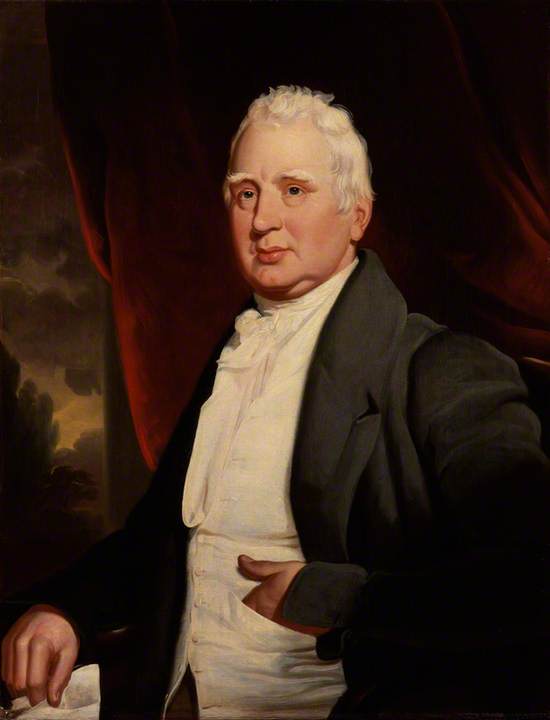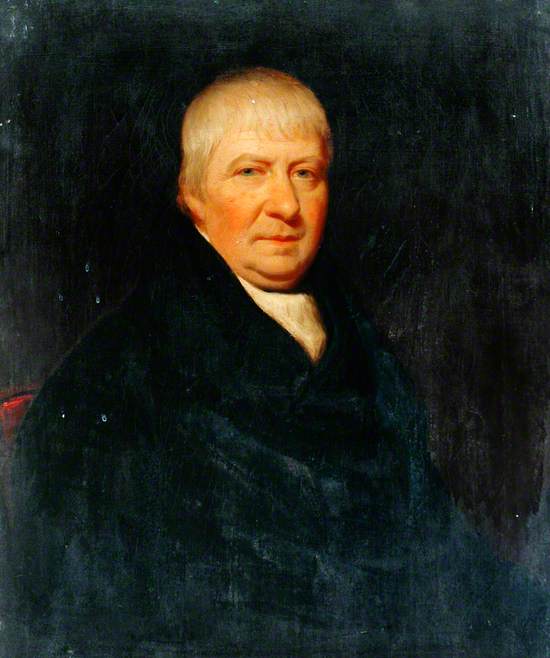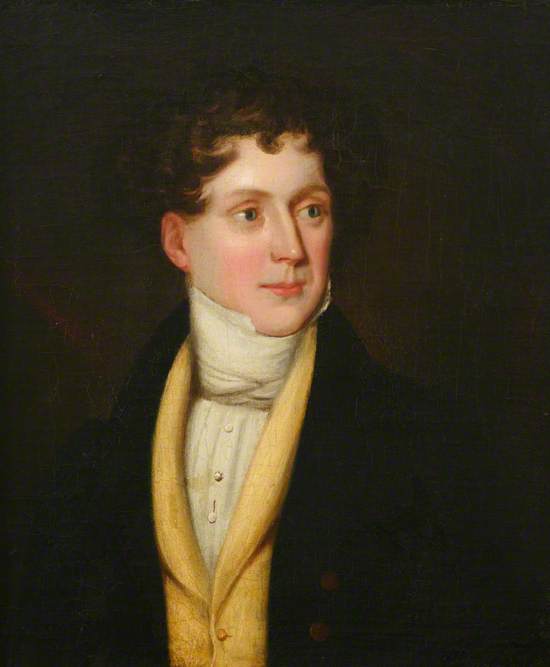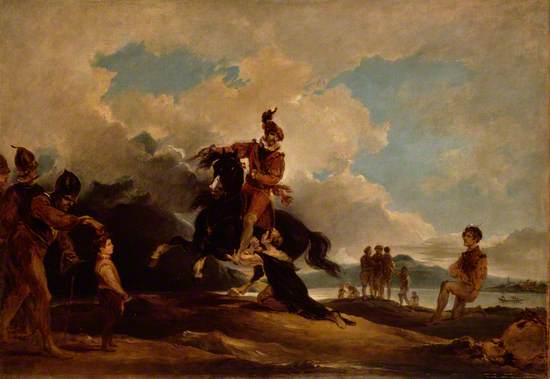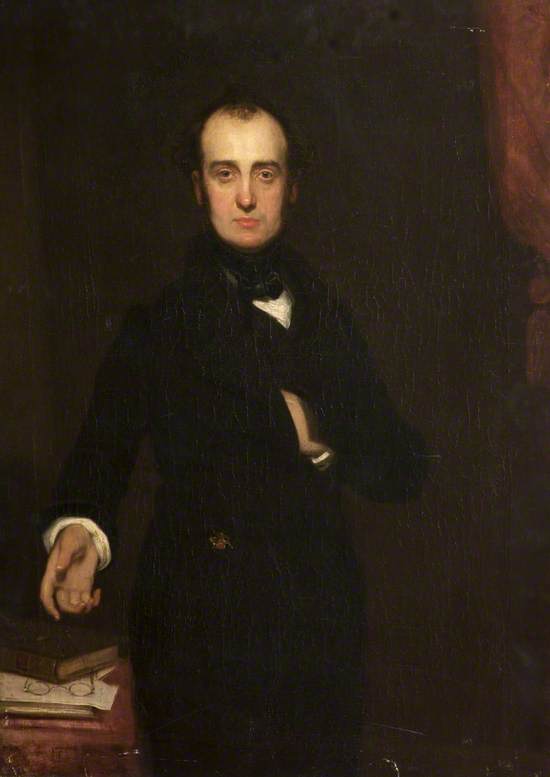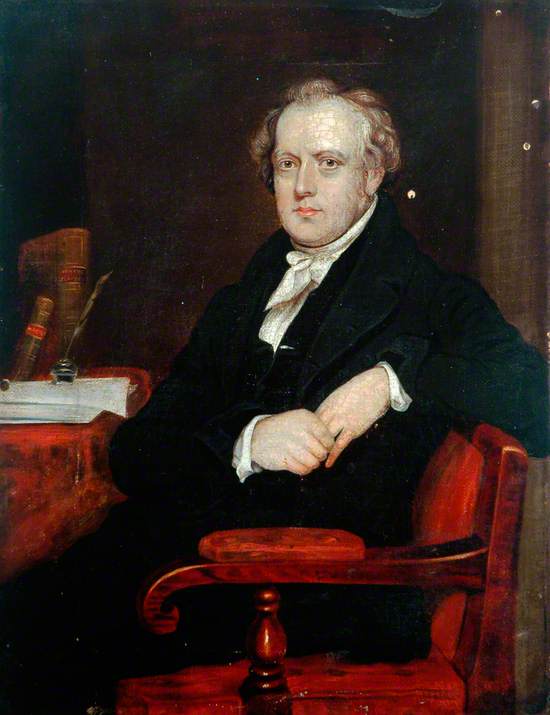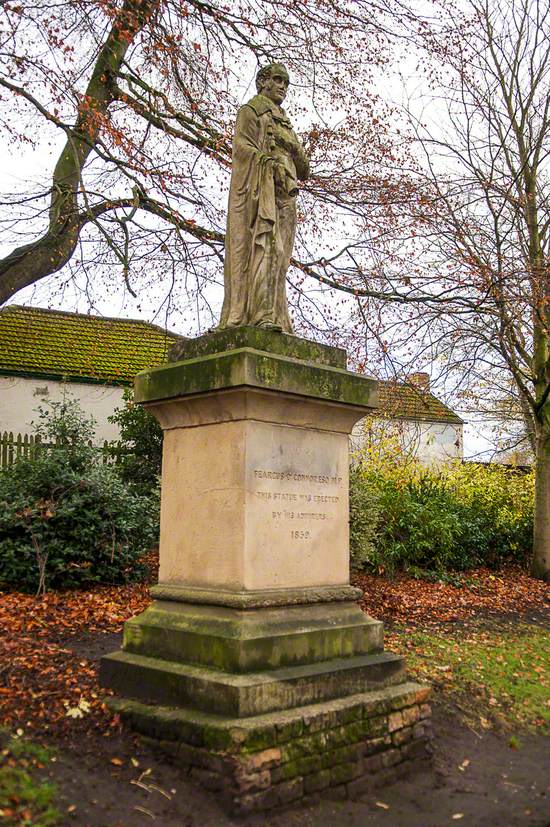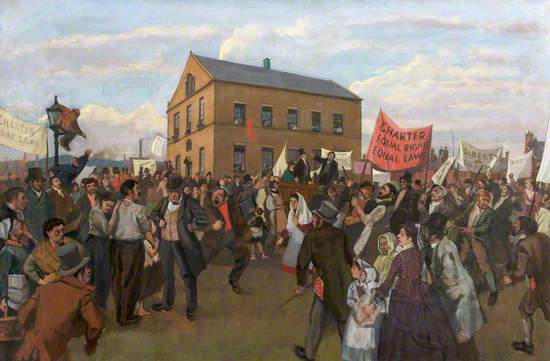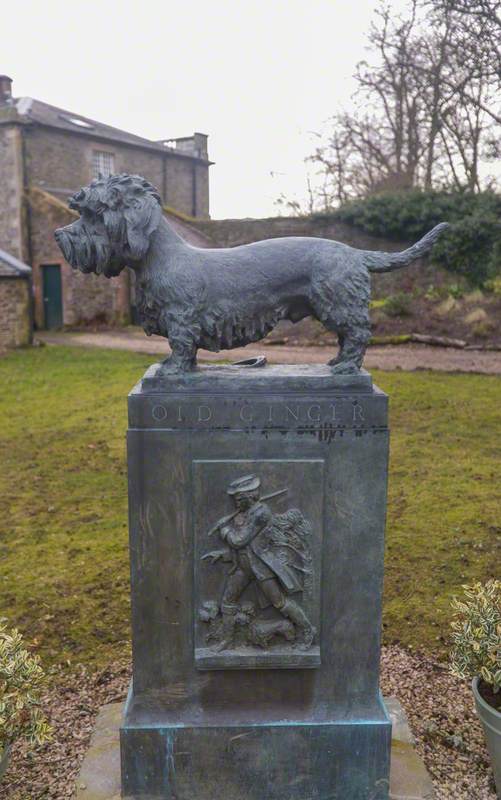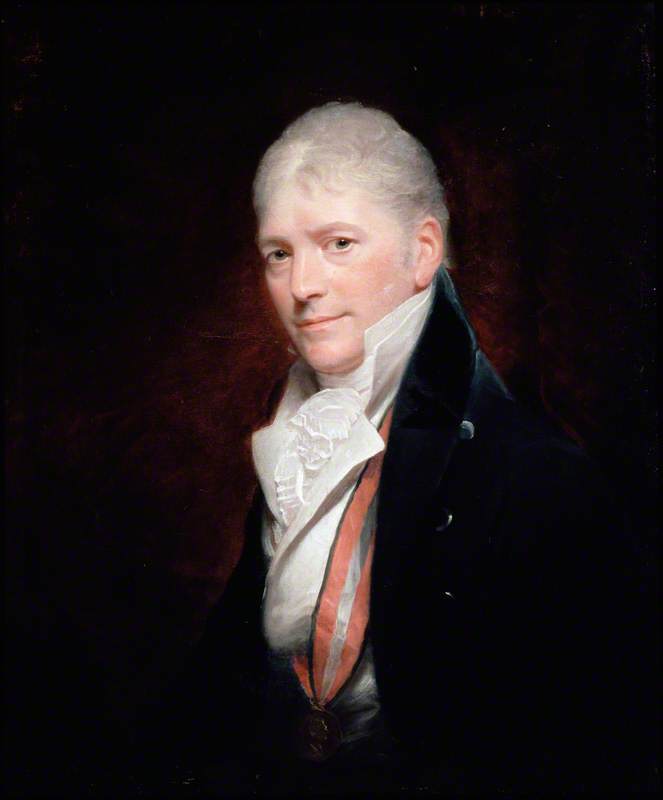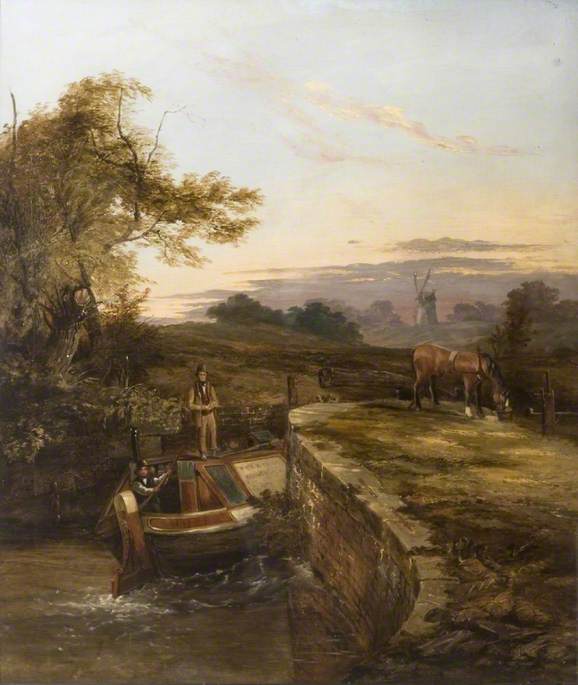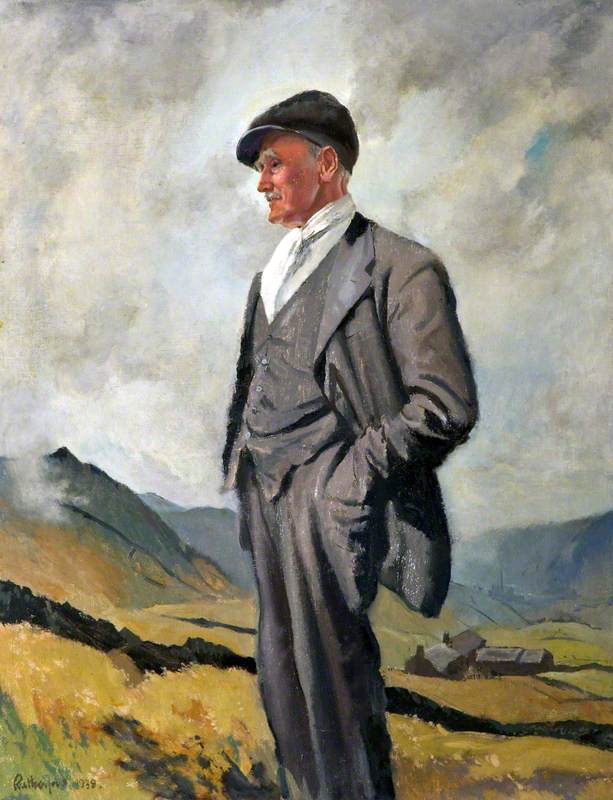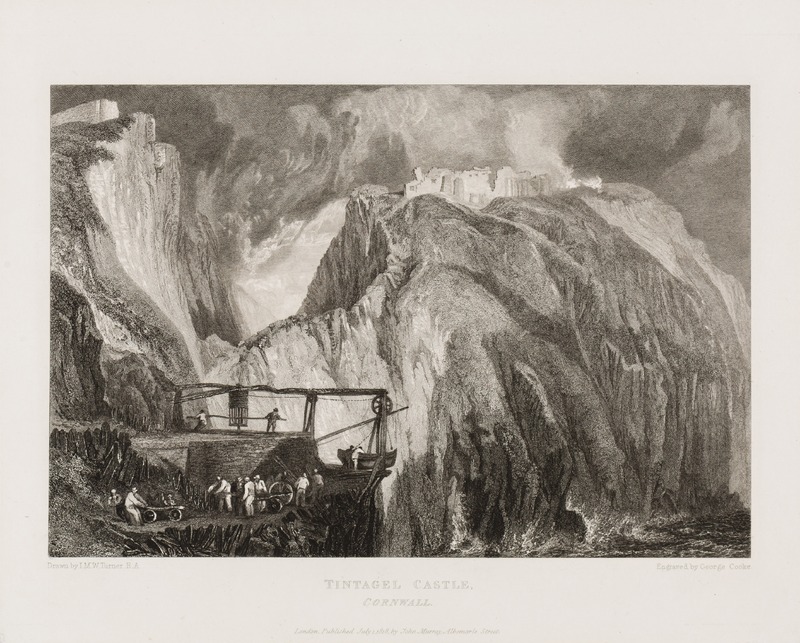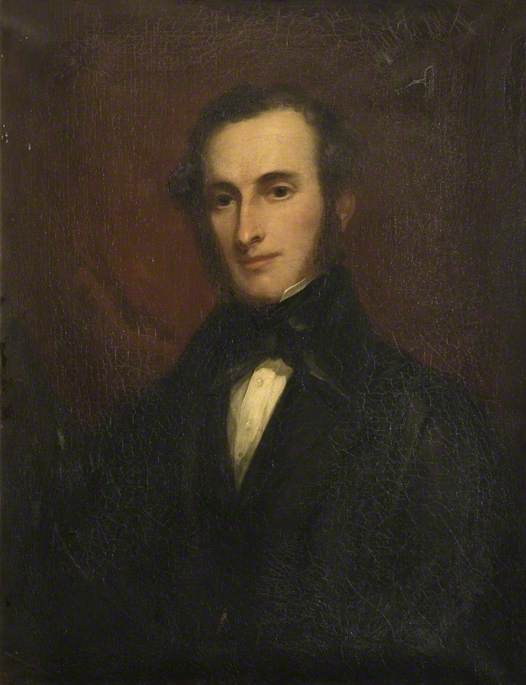Heritage was central to Chartism - Britain's civil rights movement. The Chartists campaigned for democratic and social rights for working people in the 1830s & 40s. Built in part around an imagined pantheon of heroes mostly from the radical past, this curation recreates what the walls of a Chartist home might have looked like. This is far from counterfactual. Although working people would not have been able to afford expensive paintings, we know that the movement produced merchandise, which included engraved portraits of radical heroes, mainly from the previous fifty years of British history. There were some notable omissions: it was a pantheon overwhelmingly dominated by men, mostly gentlemen, and it was uniformly white.
'That noble of nature'
Thomas Paine (1737-1809) was the co-reigning deity in the Chartist pantheon. Self-styled 'citizen of the world' and revolutionary, Paine played a part in the American and French revolutions, events which were celebrated by the Chartists. An opponent of hereditary rule, Paine spoke to the internationalism of the Chartist movement and the impatience with an older, though still influential, current of radicalism which couched democratic demands in the respectable language of restoring lost English liberties. Man had natural rights, and this included democratic representation, and for many Chartists this also included republicanism.
Auguste Millière (c.1822–after 1904)
Oil on canvas
H 40.6 x W 30.5 cm
National Portrait Gallery, London
'The enlightener of mankind'
William Cobbett (1763-1835) was the other co-reigning deity in the pantheon. A hugely influential radical who had trailblazed popular journalism, saw conspiracies against the working class everywhere in government corruption, high finance and oppressive taxation, Cobbett was the voice of the downtrodden masses. A defender of traditional popular culture and the good old days of 'Merrie England', Cobbett was a man of humble birth-turned-gentleman and promoter of healthy, self-sufficient husbandry so that the workers could feed themselves and live decent lives. He spoke to the strong current of agrarianism in British radicalism which culminated in the Chartist Land Plan. Some Chartists attacked Cobbett's racism, while others shared it.
George Cooke (1781–1834) (possibly)
Oil on canvas
H 91.4 x W 71.1 cm
National Portrait Gallery, London
'The immortal memory of Major Cartwright'
Described by some Chartists as 'our great political father', Major Cartwright (1740-1824) was accorded a special place because he was the first radical to demand all six points of what would become the People's Charter: universal manhood suffrage, voting in secret, general elections every year, payment for MPs, the abolition of the property qualification which meant that only rich people could stand for parliament, and equal-sized constituencies. He was also lauded for his dogged determination and itinerant lecturing in a career that spanned some fifty years from the time of the American revolution, which he supported, through to the early 1820s. There is a monument to Cartwright in Bloomsbury, which Chartists campaigned to rebronze.
British (English) School
Oil on canvas
H 76 x W 63.5 cm
Bradford Museums and Galleries
'The unflinching champion of universal suffrage'
The hero of the post-1815 radical mass platform, Henry Hunt (1773-1835) had been present at Peterloo in 1819, for which he was imprisoned. Hunt's message was essentially the same as Cobbett's, but 'Orator' Hunt's weapon was not his pen but his voice. While other radicals, including Cobbett, sometimes compromised and were willing to accept lesser installents, Hunt was the unflinching advocate of manhood suffrage, speaking out against the misnamed 'Great' Reform Act of 1832 which only gave the vote to middle class men and not the working classes. The great Chartist leader Feargus O'Connor was widely seen as heir to Hunt. In Lancashire, Hunt rivalled Paine and Cobbett as the brightest luminary in the pantheon.
unknown artist
Oil on canvas
H 82 x W 69.3 cm
Harris Museum, Art Gallery & Library
'The gallant chief of democracy in ill-used and betrayed Erin’
The portrait of the Irish revolutionary Robert Emmet (1778-1803), issued by the Chartist newspaper the Northern Star, was the most sought after of all its engravings. The leader of the abortive 1803 rebellion against the English, Emmet delivered a defiant courtroom address before he was sentenced to death. He was a young, romantic figure who died a tragic death. His place in the Chartist pantheon reflected the significant Irish presence in Chartism, sympathy for Irish independence, republicanism, and, for some, a willingness to take up arms against the state. Emmet's trial was regularly re-enacted by Chartist thespians, and copies of his courtroom speech were republished and widely circulated.
James Petrie (c.1745–1819) (attributed to)
Oil on canvas
H 59 x W 49.2 cm
The Royal College of Surgeons of England
'Memory of the Patriots of 1793'
The ‘Scottish Martyrs’, led by Thomas Muir (pictured here), were a group of Scottish and English radicals who were imprisoned and then transported to Australia for sedition (for doing little more than campaign vigorously for parliamentary reform). The over-reaction by the authorities was due to the French revolution then raging, the radical ideas of which heavily influenced British radicals. In 1844 a monument to their memory was erected on Calton Hill, Edinburgh, and in 1852 another was built at Nunhead Cemetery in London. Chartists fought battles with more moderate reformers for custody of the memory of the Scottish Martyrs. As with Emmet, the presence of the Scottish martyrs underlines the genuinely British scope of Chartism.
'William Tell, Andreas Hofer...and the illustrious dead of every nation'
Not all the figures in the Chartist pantheon were British. The pantheon extended to Europe and America: George Washington, Benjamin Franklin, Robespierre, Volney and 'The Tell of the Tyrol' Andreas Hofer, the Tyrolean patriot who had led the uprising against Napoleon in 1809 in present- day Austria/Italy. Hofer's heroic resistance called to mind the medieval Swiss folk-hero William Tell, pictured here, who was often conjoined with Hofer in Chartist toasts. Other medieval and early modern figures sometimes commemorated were Wat Tyler, the leader of the Peasant's Revolt, William Wallace, and the English Civil War republicans John Hampden and Algernon Sidney (though rarely Cromwell or the Levellers).
Peter Francis Bourgeois (1756–1811)
Oil on canvas
H 76.8 x W 110.2 cm
Dulwich Picture Gallery
'The eloquent assertor of human rights'
Joseph Rayner Stephens was an ex-Wesleyan Methodist minister whose impassioned advocacy of workers rights and opposition to the new workhouse regimes made him a hero in the years immediately before Chartism emerged. His place in the pantheon is a reminder that it was not just populated with the dead. An uneasy supporter of the movement in the early years, his repeated calls for workers to arm themselves in readiness for conflict with the state landed him in prison. Stephens famously defined universal manhood suffrage as a 'knife and fork question' by which he meant Chartism was just a vehicle for improving the lives of the workers. Because he tried to distance himself from Chartism at his trial in 1839, he lost his place in the pantheon.
Benjamin Garside (c.1803–1879)
Oil on canvas
H 112 x W 86 cm
Tameside Museums and Galleries Service: The Astley Cheetham Art Collection
'Friend of the factory children and the inveterate foe of the inhuman poor law'
Like his friend Stephens, Oastler was another 'live' presence in the pantheon, and like him he earned his place through advocacy of factory reform and resistance to the New Poor Law. Oastler always claimed to be a Tory, but in the 1830s and early 1840s he was a Chartist in all but name, even signing up to various points in the People's Charter. He was a land steward on an estate near Huddersfield, but his radicalism lost him his job and he was sent to prison for debt by his vindicate employer. Oastler was adamant that taking care of the vulnerable in society, especially children, was the price the wealthy paid for a civilised society; if they reneged on that, then the oppressed were in their rights to resort to violence.
Benjamin Garside (c.1803–1879)
Oil on canvas
H 36 x W 27.5 cm
Kirklees Museums and Galleries
'The martyred Samuel Holberry'
Holberry, a Sheffield Chartist, was one of the few rank and filers to make it into the pantheon. This was due to his tragic death at the age of 27 while serving a prison sentence for his part in a Chartist rising at Sheffield in January 1840. The rising was abortive and foiled by spies. The harsh prison conditions he experienced in Northallerton gaol were responsible for his death, which outraged the movement. His funeral in Sheffield drew crowds of over 20,000. The Sheffield Chartists commissioned this bust in his memory. His grave, complete with headstone, is still in Sheffield General Cemetery, and the cascades in the Peace Garden's are inscribed in his memory.
Remembering Chartism, then and since
This statue was erected in 1859 by Nottingham Chartists in the town's Arboretum in memory of the movement's leader Feargus O'Connor, who died in 1855. O'Connor sat briefly as MP for Nottingham. It is one of the few instances of tangible Chartist commemoration to be permanently inscribed on the landscape. Lack of funds and access to the public sphere by the elite meant the Chartists had to resort to makeshift memorials, such as the 'paper pantheon' of heroes featured in this curation. Another monument to O'Connor was erected in Kensal Green Cemetery, London, where he was buried. There are a few monuments to other Chartists (Dr William Price of Llantrisant), but they were not erected by Chartists or conceived as monuments to the movement.
Joseph Barlow Robinson (1820–1883)
Sandstone
H 170 x W 147 x D 71 cm
.
Toasting the memory of 'the illustrious dead'
The titles for the headings of the above images have all been taken from toasts raised by Chartists at commemorative dinners and tea parties which were such a regular feature of the movement. These were often held in pubs (which were free) but if the Chartist locality was better resourced, in their own premises such as the one featured in this image (painted much later). At these events, it was customary for toasts, short speeches, songs and poetry to be recited which paid homage to the radical shoulders on which the movement stood. The walls were sometimes decorated with portraits of radical heroes. Although usually dominated by men, Chartist women often organized and choreographed these events choosing which portraits to display.
Harry Rutherford (1903–1985)
Oil on canvas
H 59.7 x W 90.6 cm
Tameside Museums and Galleries Service: The Astley Cheetham Art Collection
Why did they bother with heritage?
Far from being a nostalgic culture of consolation, Chartists drew strength, legitimacy and tenacity from the traditions and heritage politics that they partly inherited and partly invented. The amount of time and resources that they devoted to their heritage is testament to the importance of memory and tradition in popular protest movements. Chartists eagerly appropriated and subverted many of the ritualized forms of commemoration used by elites such as portraiture, dinners and in the case of Holberry a bust in the classical style, as this demonstrated how serious and respectable they were. Chartists also published and read works by radical greats, named their children after them and quoted them on their banners.
Matthew Roberts is Reader in Modern British History at Sheffield Hallam University.
This curation accompanies my book, Chartism, Commemoration and the Cult of the Radical Hero (Routledge, 2020). I would welcome feedback and questions at matthew.roberts@shu.ac.uk
